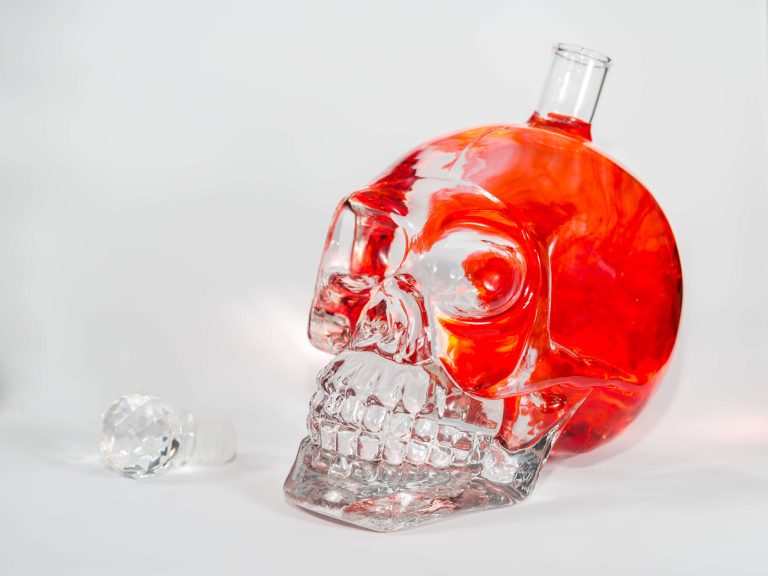Forex Trading
Drug Addiction Causes Child Abuse From Child Abuse: Opposing Viewpoints, P 85-90, 1994, David Bender and Bruno Leone, eds See NCJ-159823 Office of Justice Programs
Contents
The mediational paths remained significant when gender and the 11 subscales of the A-COPE were entered as covariates into the models, suggesting the mediational role of drug use coping motives could not be explained by other coping styles. 1, A–I, participants were grouped based on the severity of abuse reported in the CTQ Childhood Trauma Questionnaire, into none, low, alcohol, headaches and hangovers moderate and severe groups, separately for each gender. The three rows report the mean of alcohol problems , drug problems , and drug use coping motives (A-COPE), respectively. For each pane (A–I), a separate ANOVA was conducted with the drug measure (AUDIT, DUDIT or A-COPE) as the dependent variable, and the between-subject variables CTQ severity group and gender.
The goal of this case law summary is to help the field understand how different courts have approached these legal issues to establish greater uniformity when addressing prenatal substance use cases in the future. Young-Wolff K.C., Kendler K.S., Sintov N.D., Prescott C.A. Mood-related binge drinking alcohol, black tar colored stools, blank stare and bleeding drinking motives mediate the familial association between major depression and alcohol dependence. Stewart S.H., Zvolensky M.J., Eifert G.H. Negative-reinforcement drinking motives mediate the relation between anxiety sensitivity and increased drinking behavior.
The Survey collects data by administering questionnaires to a representative sample of the population through face-to-face interviews at their place of residence. Wilens, T. E., Biederman, J., Bredin, E., Hahesy, A. L., Abrantes, A., Neft, D., & Spencer, T. J. A family study of the high‐risk children of opioid‐ and alcohol‐dependent parents. The substance abusing or addicted parent is less able to parent because the substance use impairs thought processes, judgement, the parent’s ability to be available both physically and emotionally, and the parent’s ability to keep the child safe and healthy in cases where there is exposure to criminal activity. Children exposed to domestic violence have a vantage to view the violence that is not available to either the victim or the abuser. Through the eyes of a child the violence occurs suddenly, allowing no opportunity to prepare; the event is unusual and unpredictable and outside of the child’s experience; in the passive role, the child is able to fully attend to the act; absorbing the attacker’s aggression and the victim’s suffering.
While direct physical exposure to the substance can impact healthy births, many more children are affected by witnessing parental substance abuse. 2 out of 3 cases of “child abuse” have a co-occurrence of domestic violence and substance abuse.The best way to protect children is to support their mothers’ efforts to attain safety and sobriety. Programs in prevention have developed a new nomenclature to denote the target audience and focus of the program. Universal interventions are designed to address a general population, such as a community or school.
Percent of Children Under Age 1 Who Entered Out-of-Home Care in the United States, 2019
This article reviews the literature on the prediction, protection, and prevention of substance abuse in the pediatric population, including a list of available prevention programs for children across the age continuum. Research on the effectiveness of prevention curricula have generally focused on universal programs that target children in junior high and high school. One researched intervention that targets the elementary school child is the Seattle Social Development Project. The study by Hawkins et al98 supports the presence of reduced incidents of drug use, antisocial and disruptive behaviors, and improved school performance following the implementation of the Seattle Social Development Project. This technical assistance tool is for collaborative teams to learn about the Five Points of Family Intervention and identify major points in time in which their agencies can improve outcomes for infants with prenatal substance exposure, pregnant and parenting women with substance use disorders, and their families.
Child welfare, substance use treatment agencies, courts and their partners benefit from understanding how children and families in their community are affected by parental alcohol and other drug use or child maltreatment. Additional information related to child welfare or alcohol and drug use is available from the following federal data sources or data sets. Based on combined 2009 to 2014 NSDUH data, 2.1 million (2.9 percent) children aged 17 or younger lived in households with at least one parent who had a past year illicit drug use disorder . An annual average of 464,000 children aged 0 to 2 (4.0 percent of this age group), 413,000 children aged 3 to 5 (3.5 percent of this age group), 718,000 children aged 6 to 11 (3.0 percent of this age group), and 500,000 children aged 12 to 17 (2.1 percent of this age group) lived with at least one parent with an illicit drug use disorder. Because of the methodology used to calculate the number of children living with a parent with a past year illicit drug use disorder, it is not possible to determine whether there were significant variations by age group.
Scores between 0–7 indicate low-risk alcohol use, whereas scores of 8+ indicate hazardous drinking. The Cronbach’s alpha of the AUDIT was .87 indicating good internal consistency of the items. Access to secondary schools was granted by the Western Cape Education Department.

The percentage for children age 1 and older (36.1%) was closer to the overall national average (38.9%). About 1.6 million children aged 17 or younger resided in a two-parent household with at least one parent who had an illicit drug use disorder, and about 538,000 children resided in a single-parent household with a parent who had an illicit drug use disorder. In other words, about 3.1 percent of children residing in two-parent households lived with at least one parent who had a past year illicit drug use disorder, and 2.6 percent of children residing in single-parent households lived with a parent who had an illicit drug use disorder. Among the 538,000 children residing in single-parent households with a parent who had an illicit drug use disorder, 111,000 lived with their fathers and 427,000 lived with their mothers.
Youcanlearn new ways to break these old patterns, understand their origins and manage your emotions. There are many excellent and successful substance abuse treatment programs available. They may believe that after their treatment is over, everything will be fine. Many people who abuse alcohol, marijuana, and prescription drugs often separate themselves from the “harder” drug users and think their addiction is not a problem or is not hurting their family.
Through the eyes of a child
There is a clear and distinctcorrelation between child trauma and drug and alcohol addiction. The traumatic incidents that we experience in our childhood very easily can, and often do, wind up following us into maturity creating a variety of long-term mental health issues that may cause us to self-medicate through excessive drinking or drug abuse. The most important finding was that drug use coping motives mediated the relationship between childhood abuse and alcohol/drug problems. These mediational pathways remained significant when gender and other subscales of the A-COPE were entered as covariates suggesting that the mediating role of drug use coping motives could not be explained by other coping styles. The study is the first to confirm this mediational pathway in school attending adolescents , and in South African adolescents, suggesting the mediational path is found cross culturally.
The toolkit provides definitions, statutory requirements, examples of reasonable and active efforts, and a resource guide for further reading. It is also included as a resource on the Child Welfare Information Gateway. The most recent Treatment Episode Data Set Admissions (TEDS-A) contains data from Fiscal Year 2018.
In the United States, about 1 in 8 children ages 17 or younger are living in households with at least one parent who has a substance use disorder. Policies and procedures that encourage parents to enter substance use treatment and consider their parenting role as a part of their recovery process help to reduce the effects of parental substance use disorders on their children. Services for children that address their medical and developmental needs and experiences of trauma and reestablish trusting bonds with their families are critical. It is currently unknown whether, in school attending adolescents, drug use coping motives mediate the relationship between childhood abuse and alcohol/drug problems, as the forgoing mediation studies have all recruited adults.
- It is also included as a resource on the Child Welfare Information Gateway.
- Kaminer D., du Plessis B., Hardy A., Benjamin A. Exposure to violence across multiple sites among young South African adolescents.
- The mediational paths remained significant when gender and the 11 subscales of the A-COPE were entered as covariates into the models, suggesting the mediational role of drug use coping motives could not be explained by other coping styles.
- Ncbi.nlm.nih.gov – Relationship of childhood abuse and household dysfunction to many of the leading causes of death in adults.
- Among the 1.4 million children residing in single-parent households with a parent who had an alcohol use disorder, 273,000 lived with their fathers and 1.1 million lived with their mothers.
- Where the risk-protective equation implies the tallying of factors, the Challenge Model asserts that individuals can achieve beyond the negative factors in their lives; in essence, resiliency.
States often anecdotally report that the percentage of child welfare removals involving parental AOD abuse is much higher in their state than indicated in the data. Often, at the local level, multiple removal reasons are reported and sometimes only the primary reason for removal is reported by the federal system. Based on data from the combined 2009 to 2014 National Surveys on Drug Use and Health, about 1 in 8 children (8.7 million) aged 17 or younger lived in households with at least one parent who had a past year substance use disorder . SUDs are characterized by recurrent use of alcohol or other drugs that results in significant impairment. Table 1A shows six mediation models with CTQ childhood abuse types as predictors , alcohol or drug problems as the outcome , and drug use coping motives (A-COPE) as the mediator .
However, Cronbach’s alpha decreases with fewer items so a lower threshold for acceptability is sometimes applied in such cases (Heo et al., 2015). Furthermore, the corrected item total correlations for the smoke, drugs and drink coping items were .44, .32, and .32 respectively, indicating that each item was correlated with a composite of the remaining items, and all are above the desirable cutoff of .3 . Finally, if each of the individual items was deleted, the overall Cronbach’s alpha of .54 would be reduced to .29, .50, and .51, respectively, indicating that each item contributed to the overall Cronbach’s alpha value. From this analysis, it might be concluded that the bespoke index of coping motives is acceptable, but minimally so, and thus evidence for the mediating role of coping motives in the current models may be deemed preliminary. A key objective of future work should be to overcome this limitation by testing whether the current mediational pathways are replicated, or ideally are stronger, when a validated, multiple-item assay of drug use coping motives is tested as the mediating variable.
Individualized Treatment
Parents experiencing both domestic violence and substance abuse are emotionally and physically unavailable, unable to provide secure attachments for the child. ΩUnder state’s child abuse law, a parent is considered unfit if they test positive for substances within eight hours after delivery and have previously been convicted of child abuse or neglect or if they failed to complete a drug treatment program recommended by Child Protective Services. Food, after all, is the cheapest, most available, legal, socially acceptable mood-altering drug on the market.

The percentage of children aged 12 to 17 years who have seen people selling drugs is higher in the African American community than in communities with a majority of white or Hispanic children (41.2% vs 7.4% and 23.9%, respectively). More African American children aged 12 to 17 years are exposed to people who are high or drunk (55.7%) than children of other ethnic groups.29 The percentage of children reporting that obtaining illicit drugs is fairly or very easy is higher among African American and Hispanic youth when compared with their white peers. Despite this exposure, African American adolescents have a lower reported rate of drug use than their white peers.29 The work of Crum et al71 found an association between neighborhood disadvantage and exposure to cocaine. Youths living in the most disadvantaged areas were more than 5 times as likely to be offered cocaine as compared with those in more advantaged areas. Regional Partnership Grant programs develop collaborative systems and outcomes specific to their specific project strategies.
National Child Abuse Hotline
About 9.3 percent of children residing in father-only households lived with a father who had an alcohol use disorder, and 6.3 percent of children residing in mother-only households lived with a mother who had an alcohol use disorder. Overall, about 7.5 million (10.5 percent) children aged 17 or younger lived in households with at least one parent who had an alcohol use disorder . In the past three decades, the United States has experienced at least three major shifts in substance use trends that have had dramatic effects possible allergic reaction to beer on children and families. However, the increase of opioid misuse has been described by long-time child welfare professionals as having the worst effects on child welfare systems that they have seen. Studies indicate that there is substantial overlap between parents involved in the child welfare and substance use treatment systems. Identifying these families is difficult, as neither child welfare nor substance use treatment are required to capture the data elements necessary to identify families in both systems.
Stopping Childhood Trauma in Its Tracks
Breaking the cycle of abuse can be difficult, especially if you also struggle with substance use disorder. Through professional treatment for addiction, you can explore your past, understand your present and build a better future for yourself and your children. Every child deserves the support and comfort that comes from being raised in a stable home. According to the National Children’s Alliance, nearly700,000 childrenare abused in the United States every year.
Prevention based interventions and strategies for adolescents at risk for suicide and mental health concerns. Windle M., Windle R.C. A prospective study of stressful events, coping motives for drinking, and alcohol use among middle-aged adults. Discusses laws and policies that address the issue of substance use by parents. One major area of concern is responding to the care and treatment needs of substance-exposed infants. Another major concern is addressing the harm that a child of any age can suffer when a parent’s use of alcohol or other substances leads to neglect of the child or the child is exposed to illegal drug activity.
During the 1970s through 1980s, prevention efforts focused on social and interpersonal influence models. The theory underlying this approach postulated that youth experimented with drugs and alcohol because they had not fully developed their own internal value system to resist external pressures. The prevention programs of the 1990s offer a comprehensive systems approach. They are research-based, age-appropriate, culturally relevant interactive resistance models. Active learning techniques are the primary teaching modality, as opposed to passive didactics. Small-group, role-playing, and interactive learning techniques are imperative in these programs.
In short, for girls, the absence of resiliency and the lack of self-control during early childhood predict both marijuana and hard drug use in adolescence. Involvement with harder drugs seemed to represent an extension of the behavioral characteristics that predisposed to marijuana use in boys, while in girls additional psychopathological characteristics were usually present when harder drug use was evidenced. In another study, Luthar et al66 reported that women who abused drugs had a higher incidence of internalizing problems, eg, depression, anxiety, and withdrawn behaviors, during childhood and had more severe psychiatric symptoms as adults. Conduct disorders were found more frequently in men who were in treatment for drug abuse. The main limitation was the non-validated index of drug use coping motives derived from three items of the A-COPE.
Inability to process childhood trauma can have a direct impact on professional mobility and quality of life. This substance use prevention campaign provides tools to assist parents and caregivers on how to discuss the dangers of substances and alcohol with their children. Key strategies and resources to promote resilience, recovery, and positive youth development for adolescents involved in child welfare. How to identify adolescents at risk for suicide and mental health concerns. The National Survey on Drug Use and Health is an annual survey sponsored by The Substance Abuse and Mental Health Services Administration . The data used in this report are based on information obtained from 22,200 adults aged 18 or older with at least 1 related child aged 17 or younger residing in the household in the 2009 to 2014 NSDUHs.
